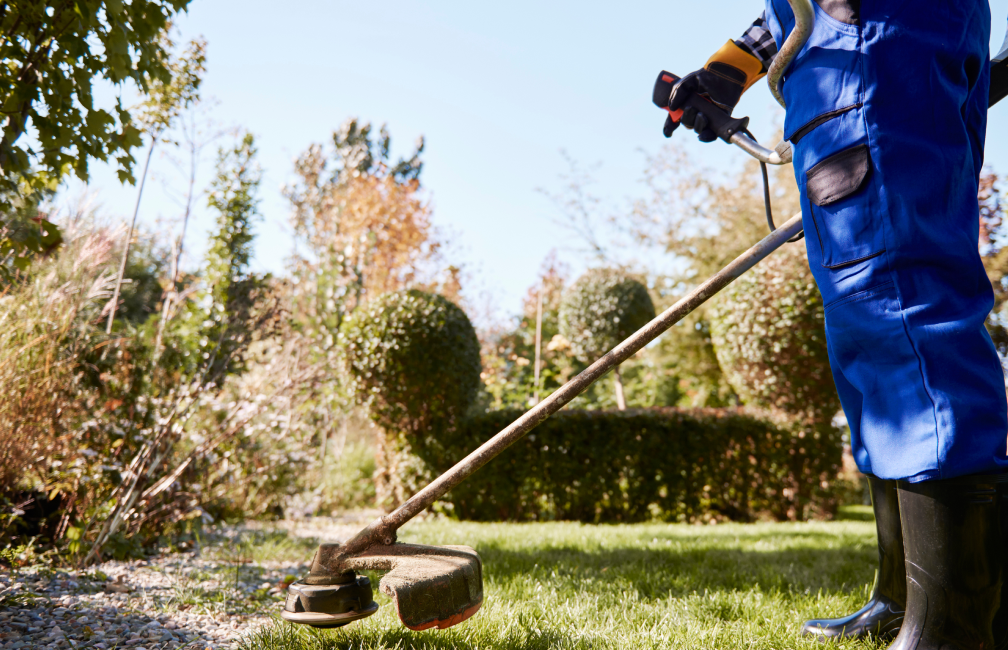
Belmont Dethatching Lawn Services
Choose our professional dethatching services to remove built-up thatch, improve soil health, and ensure your lawn grows lush, green, and resilient all season long.
Get a Free QuoteWhen to Schedule Dethatching Lawn in Belmont, MA – Seasonal Guide
In Belmont, MA, the best time to schedule lawn dethatching is typically in early spring or early fall, when grass is actively growing and can recover quickly. Belmont’s climate features cold winters and warm, humid summers, so timing dethatching around the last frost date and before the summer heat is crucial. Neighborhoods near Beaver Brook Reservation or around Belmont Hill often experience varying shade coverage and soil moisture, which can impact the ideal dethatching window.
Local environmental factors such as Belmont’s clay-heavy soils, risk of late spring frosts, and periods of summer drought should all be considered. Homeowners should also be aware of municipal guidelines and seasonal updates provided by the Town of Belmont to ensure compliance and optimal lawn health.
Local Factors to Consider for Dethatching Lawn in Belmont
- Tree density and shade coverage, especially in areas like Payson Park
- Soil type and drainage, common in neighborhoods near Clay Pit Pond
- Average precipitation and risk of drought during summer months
- Timing around last frost and first frost dates
- Terrain slope and risk of runoff
- Municipal restrictions or recommended service windows
Benefits of Dethatching Lawn in Belmont

Improved Lawn Health
Enhanced Grass Growth
Increased Water Absorption
Reduced Pest Infestation
Boosted Curb Appeal
Professional Landscaping Expertise

Belmont Dethatching Lawn Types
Cool-Season Grasses
Warm-Season Grasses
Fescue Lawns
Bluegrass Lawns
Ryegrass Lawns
Bermuda Grass Lawns
Zoysia Grass Lawns
Our Dethatching Lawn Process
Lawn Evaluation
Preparation and Marking
Dethatching
Cleanup and Disposal
Post-Dethatching Inspection
Why Choose Belmont Landscape Services

Belmont Homeowners Trust Us
Expert Lawn Maintenance
Reliable Scheduling
Competitive Pricing
Professional Team
Satisfaction Guarantee
Personalized Service
Contact Belmont's Department of Public Works for Dethatched Material Disposal & Yard Waste Collection
Belmont residents benefit from sophisticated yard waste processing systems that accommodate this affluent community's intensive landscape maintenance requirements. The Department of Public Works coordinates seasonal collection programs and operates accessible drop-off facilities specifically engineered to handle the substantial volumes of dethatched materials generated during peak renovation periods across this distinguished inner-ring suburb.
Belmont Department of Public Works
455 Concord Avenue, Belmont, MA 02478
Phone: (617) 993-2600
Official Website: Belmont Department of Public Works
Successful organic material processing requires residents to follow established preparation guidelines that support municipal composting objectives:
- Package organic debris exclusively in certified biodegradable paper containers; synthetic materials contaminate composting streams and violate state organic waste processing regulations
- Remove all foreign materials including stones, soil clumps, construction debris, and landscape artifacts that damage municipal processing equipment
- Adhere to published weight restrictions and container specifications for both curbside collection and Transfer Station operations
- Check municipal communications for schedule modifications during weather events and peak maintenance seasons
- Position materials to maintain pedestrian access and prevent storm drainage system obstruction
Understanding Thatch Buildup in Belmont's Drumlin Topography & Clay Pit Pond Watershed Conditions
Belmont's distinctive geological foundation creates specialized growing environments that significantly influence thatch development across this prestigious suburban community. USDA Web Soil Survey mapping identifies complex formations including Paxton and Charlton fine sandy loam on drumlin slopes, Canton fine sandy loam on moderate glacial till areas, and Ridgebury fine sandy loam in kettle depressions, alongside Urban land complexes where intensive residential development has modified natural substrates throughout this established inner-ring suburb.
University of Massachusetts Extension Center for Agriculture, Food and the Environment
161 Holdsworth Way, Amherst, MA 01003
Phone: (413) 545-2717
Official Website: University of Massachusetts Extension
Clay Pit Pond watershed influences generate elevated humidity levels that can impede natural decomposition while promoting rapid grass growth throughout Belmont's meticulously maintained residential properties. The town's characteristic drumlin topography creates diverse exposure patterns where south-facing slopes experience enhanced heat stress while north-facing areas retain moisture longer, complicating uniform thatch management approaches. Intensive fertilization programs common in this affluent community accelerate organic matter production, while glacial till substrates often develop compacted conditions through foot traffic and maintenance activities.
Properties where thatch accumulation exceeds the recommended 0.5-inch threshold experience cascading problems including poor water infiltration, restricted nutrient availability, and increased disease susceptibility. Residents should monitor for springy surface texture, water beading during irrigation, uneven fertilizer response, and moss expansion as indicators requiring intervention.
Key practices for managing thatch in Belmont's conditions include:
- Scheduling operations during moderate weather periods when drumlin microclimate effects support rapid turf recovery without stress complications
- Coordinating with core aeration services addressing compaction prevalent in glacial till substrates and high-traffic residential areas
- Selecting premium grass cultivars adapted to varied topographic exposures and sophisticated irrigation system influences
- Managing precision fertilization programs preventing excessive growth while maintaining prestigious landscape standards
- Establishing immediate ground coverage following dethatching using elite varieties suited to Belmont's demanding residential environment
Reference: USDA Web Soil Survey
Belmont Conservation Commission Requirements for Dethatching Near Wetlands & Protected Areas
Belmont's integration of natural resources within intensive suburban development necessitates comprehensive environmental planning for lawn maintenance activities throughout this inner-ring community. The Massachusetts Wetlands Protection Act establishes protective buffer zones extending 100 feet from wetland boundaries and 200 feet from waterways, affecting properties near Clay Pit Pond, Beaver Brook, Wellington Brook, and numerous smaller wetland systems that persist throughout this densely developed landscape.
Belmont Conservation Commission
455 Concord Avenue, Belmont, MA 02478
Phone: (617) 993-2670
Official Website: Belmont Conservation Commission
Wildlife habitat protection requires heightened consideration during April through July breeding seasons when diverse species utilize Belmont's remaining green corridors and conservation areas. Properties adjacent to Rock Meadow Conservation Area, McLean Hospital grounds with preserved natural features, or educational facilities must implement immediate soil stabilization preventing erosion into sensitive aquatic habitats supporting both ecological diversity and recreational opportunities.
Substantial dethatching within regulated zones typically requires environmental review through Request for Determination of Applicability or Notice of Intent procedures. Manual techniques and gentle scarification methods are recommended near Clay Pit Pond and conservation boundaries to minimize ground disturbance while protecting aquatic resource integrity essential to Belmont's environmental character.
Belmont's Implementation of Massachusetts Organic Waste Regulations for Dethatched Material
State mandates under Massachusetts General Law Chapter 111, Section 150A prohibit organic waste disposal through household refuse collection, requiring Belmont to establish alternative processing pathways for lawn debris. The town operates comprehensive diversion programs accommodating individual property needs while supporting community-wide sustainability objectives throughout this MetroWest suburban community.
Massachusetts Department of Environmental Protection
One Winter Street, Boston, MA 02108
Phone: (617) 292-5500
Official Website: Massachusetts Department of Environmental Protection
Massachusetts Department of Agricultural Resources
251 Causeway Street, Suite 500, Boston, MA 02114
Phone: (617) 626-1700
Official Website: Massachusetts Department of Agricultural Resources
Residential composting provides excellent processing opportunities where property layouts permit appropriate siting away from Clay Pit Pond systems and neighboring homes. Backyard operations must maintain adequate distances from conservation areas and property boundaries while preventing nutrient migration through proper management techniques.
Municipal collection operates year-round with enhanced capacity during optimal maintenance periods, ensuring Massachusetts General Law Chapter 111, Section 150A compliance through regional processing partnerships. Additional guidance from the Massachusetts Department of Agricultural Resources addresses sustainable organic waste practices appropriate for affluent suburban communities with intensive landscape management.
Post-Dethatching Stormwater Management in Compliance with Belmont's MS4 Program
Belmont's Municipal Separate Storm Sewer System obligations emphasize comprehensive watershed protection throughout the community's drainage network contributing to the Mystic River system. National Pollutant Discharge Elimination System standards mandate rigorous pollution prevention during soil-disturbing activities, with enhanced requirements for suburban areas contributing to regional waterway protection.
U.S. Environmental Protection Agency, Region 1
5 Post Office Square, Suite 100, Boston, MA 02109
Phone: (617) 918-1111
Official Website: U.S. Environmental Protection Agency, Region 1
Suburban weather monitoring becomes essential for compliance, requiring work suspension when precipitation threatens within 24 hours. Property owners should consult National Weather Service Boston forecasts before beginning soil disturbance activities. Post-dethatching stabilization requirements include:
- Immediate establishment of protective ground coverage within 24 hours using premium seed mixtures adapted to drumlin topography and sophisticated irrigation system support
- Strategic nutrient management preventing excess applications that contribute to Clay Pit Pond contamination and regional water quality impairment
- Careful irrigation timing supporting establishment while preventing runoff into Belmont's comprehensive storm drainage infrastructure
- Coordinated soil enhancement addressing compaction from intensive residential activities and high-maintenance landscape systems
- Installation of temporary erosion barriers on drumlin slopes and areas vulnerable to storm-related soil displacement
These measures ensure Clean Water Act and EPA NPDES compliance while supporting turf recovery in Belmont's challenging suburban environment.
What Neighborhoods Do We Serve Throughout Belmont, MA?
Belmont's distinctive residential districts present diverse thatch management challenges reflecting varied drumlin topography, development histories, and environmental conditions throughout this affluent inner-ring community.
Belmont Hill Residential Estates encompasses premium properties on elevated drumlin terrain with sophisticated landscape systems and varied topographic exposures. South-facing slopes experience enhanced heat stress requiring drought-tolerant varieties while established tree canopy creates diverse microclimates affecting thatch accumulation patterns throughout this prestigious neighborhood.
Clay Pit Pond Watershed District includes properties with distinctive growing conditions from pond proximity and enhanced humidity levels. Seasonal moisture variations affect decomposition rates while strict watershed protection requirements demand careful nutrient management during maintenance activities throughout this environmentally sensitive area.
Belmont Center Village Core features traditional civic areas with mature street trees and potentially compacted soils from community activities. Limited space between historic buildings creates challenging light conditions while established infrastructure often requires specialized manual techniques for effective maintenance throughout this commercial district.
Waverley Square Transit Interface encompasses mixed residential and commercial development near MBTA infrastructure with altered soil conditions from transportation activities. Properties may experience winter salt damage affecting spring recovery while modified drainage patterns influence water infiltration and organic matter accumulation throughout this transit-oriented zone.
Rock Meadow Conservation Interface includes residential development adjacent to this significant conservation holding with challenging growing conditions from preserved natural area proximity. Enhanced humidity and organic matter input from adjacent conservation lands affect turf health while conservation oversight influences maintenance timing throughout this protected interface zone.
Wellington Suburban Neighborhoods feature established residential areas with mature forest canopy creating acidic soil conditions from continuous leaf drop. Reduced sunlight and organic matter accumulation favor moss development while sophisticated landscape systems require coordination during dethatching activities throughout this wooded enclave.
McLean Hospital Institutional Vicinity encompasses properties near healthcare facility grounds with unique environmental conditions from institutional landscape proximity. Wildlife corridor considerations affect maintenance timing while institutional activities may influence soil conditions and environmental compliance requirements throughout this healthcare facility district.
Belmont Municipal Bylaws for Landscaping Operations & Equipment Use
Municipal ordinances governing landscaping operations in Belmont establish comprehensive standards balancing professional service access with residential neighborhood protection throughout this prestigious suburban community. These regulations reflect the town's commitment to environmental stewardship while ensuring access to essential lawn care services within sophisticated residential infrastructure demands.
Belmont Building Department
455 Concord Avenue, Belmont, MA 02478
Phone: (617) 993-2650
Official Website: Belmont Building Department
Belmont Board of Health
455 Concord Avenue, Belmont, MA 02478
Phone: (617) 993-2650
Official Website: Belmont Board of Health
Noise control regulations establish specific operational hours reflecting residential character while accommodating sophisticated landscape management schedules throughout this affluent community. Commercial service providers must maintain comprehensive insurance coverage appropriate for high-value residential properties while demonstrating environmental compliance capabilities for Clay Pit Pond watershed protection.
Equipment operation standards address unique suburban challenges including navigation of narrow residential streets, protection of extensive underground utilities serving irrigation systems, and coordination with educational institution schedules. Service providers must demonstrate competency in drumlin slope soil management while maintaining effective thatch removal capabilities in intensively managed residential substrates.
Substantial dethatching projects near Clay Pit Pond, conservation areas, or institutional properties typically require coordination with multiple municipal departments ensuring environmental protection compliance. Professional operators must maintain current training in affluent suburban community best management practices while ensuring successful turf establishment in Belmont's complex residential environment with its sophisticated infrastructure and stringent environmental requirements.